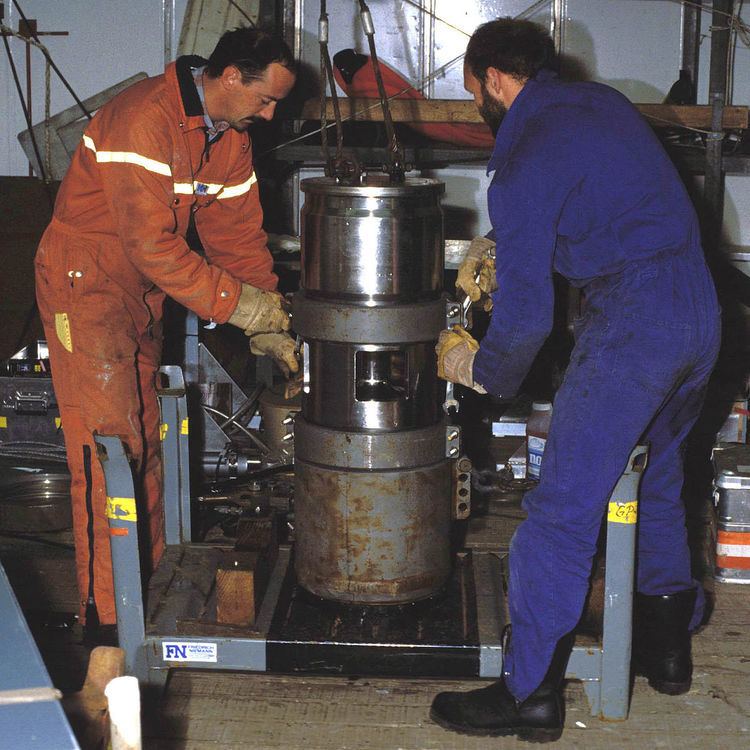 | ||
A seismic source is a device that generates controlled seismic energy used to perform both reflection and refraction seismic surveys. A seismic source can be simple, such as dynamite, or it can use more sophisticated technology, such as a specialized air gun. Seismic sources can provide single pulses or continuous sweeps of energy, generating seismic waves, which travel through a medium such as water or layers of rocks. Some of the waves then reflect and refract and are recorded by receivers, such as geophones or hydrophones.
Seismic sources may be used to investigate shallow subsoil structure, for engineering site characterization, or to study deeper structures, either in the search for petroleum and mineral deposits, or to map subsurface faults or for other scientific investigations. The returning signals from the sources are detected by seismic sensors (geophones or hydrophones) in known locations relative to the position of the source. The recorded signals are then subjected to specialist processing and interpretation to yield comprehensible information about the subsurface.
Source model
A seismic source signal has the following characteristics:
- Generates an impulse signal
- Band-limited
- The generated waves are time-varying
The generalized equation that shows all above properties is:
where
